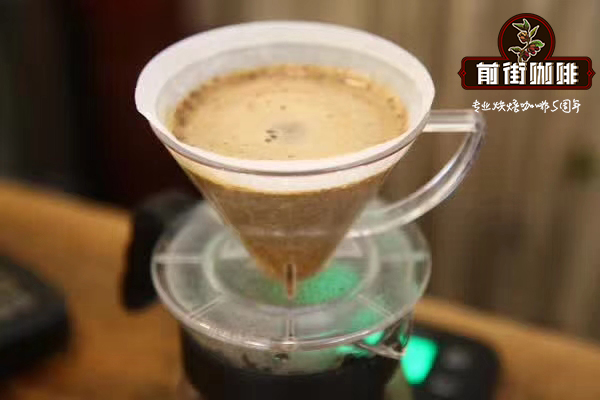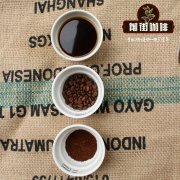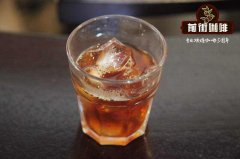Coffee sensory tool cognition: coffee taste devil water Q grader devil water formula

Professional coffee knowledge exchange more coffee bean information please follow the coffee workshop (Wechat official account cafe_style)
Devil's water is known to us in the Q-grader exam (Q-grader: international coffee tasters, divided into Arabica and Robusta). The so-called Devil's Water is actually a mixture of sour, sweet and salty solution, and in the tasting teacher's assessment, it is necessary to distinguish the corresponding sour, sweet and salty category in the solution and correctly identify its intensity. Since few people have gone through this kind of taste training, this course has a very low pass rate in the Q exam, so it is also known as Devil Water.
Devil's water, as a taste test, examines the sensitivity and taste of our tongues to sour, sweet and salty. Therefore, we need to grasp the characteristics of each different taste and the corresponding intensity under these characteristics.
At the beginning of our training, in order to enable students to better understand and learn, we will simply put sour, sweet and salty according to different intensity order, so that everyone can identify and remember them one by one.
After training in this way, we disrupt the order of the devil water in all individual categories, and the tasting exercises sort them according to their taste and intensity to deepen the impression.
Finally, the actual assessment of devil water is that there are two or three different kinds of taste in one cup of aqueous solution, so it is necessary to distinguish the corresponding taste of 8 cups of solution and fill in the corresponding taste level correctly. It sounds terrible. This is the so-called devil water.
How can you tell whether a cup of coffee is good or bad? Do professional coffee tasters need a keen sense of smell that others cannot match? Reveal how Q-Grader (Arabica boutique coffee quality grader), one of the most rigorous coffee sensory testing systems in the world, is refined.
In recent years, with the rapid development of the domestic coffee market, consumers begin to pay more attention to the quality of coffee, professional coffee tasters are also gradually known by people, and attract more and more coffee lovers to join this ranks. In order to become an Q-Grader, you need to take about 20 exams, including theory test, raw bean grading, cup test, smell bottle smell test, organic acid matching, baking degree identification, taste sense test, and so on.
The teacher prepares "devil's water" made from a mixture of sour, salty and sweet solutions of different intensities for students. Students need to distinguish the taste and intensity of the drink.
They need to repeatedly scoop up the coffee and sip it, and then write down the taste, taste and flavor of the coffee. The day before, they had had a training in the sense of smell of incense bottles.
"in order to successfully pass the Q-Grader exam, students need not only to learn coffee expertise such as raw bean grading, but also to carry out all kinds of devil training in taste and smell." Training course preparation Q instructor Jiang Chennan told reporters that coffee tasting is similar to tasting wine and perfume, and olfactory training is the first step. Students are asked to memorize and identify 36 fragrance types, including lemon, potato, green pea, coffee flower, honey, caramel, vanilla, malt, tobacco and soil.
The cup test that the students are learning is the quantitative identification of the quality of coffee. It converts a rather subjective sensory experience into quantitative data to judge whether coffee is good or bad. The reporter saw at the scene that students need to rate each cup of coffee tested, including dry / wet aroma, flavor, acidity, alcohol thickness, consistency and so on.
"the emergence of a cup of boutique coffee is closely linked to every link of the industrial chain. Coffee growers, roasters, baristas and quality controllers all need to master cup testing skills that act as a connecting link between the preceding and the following, and learning Q-Grader is the beginning of mastering this skill.
Important Notice :
前街咖啡 FrontStreet Coffee has moved to new addredd:
FrontStreet Coffee Address: 315,Donghua East Road,GuangZhou
Tel:020 38364473
- Prev

Coffee Flavor Cognition: what is the Coffee sensory Dictionary WCR Coffee Flavor Dictionary
Professional coffee knowledge exchange more information about coffee beans Please follow the coffee workshop (Wechat official account cafe_style) Coffee flavor ring is made up of circular text. Why don't we use flavor trees, flavor pyramids or flavor forks? This seems to have something to do with the first flavor ring, developed by chemist Dr. Morten C.Meilgarrd for beer in the 1970s.
- Next

Understand what coffee quality control is what coffee quality control means
Professional coffee knowledge exchange more coffee bean information Please follow the coffee workshop (Wechat official account cafe_style) Coffee quality test is divided into Italian and single product two modules Italian test routine inspection: check the status of Italian beans on the same day, whether the oil and oil production, according to the bean roasting date, roasting degree and the influence of temperature, to determine whether the oil situation is reasonable. System
Related
- Beginners will see the "Coffee pull flower" guide!
- What is the difference between ice blog purified milk and ordinary milk coffee?
- Why is the Philippines the largest producer of crops in Liberia?
- For coffee extraction, should the fine powder be retained?
- How does extracted espresso fill pressed powder? How much strength does it take to press the powder?
- How to make jasmine cold extract coffee? Is the jasmine + latte good?
- Will this little toy really make the coffee taste better? How does Lily Drip affect coffee extraction?
- Will the action of slapping the filter cup also affect coffee extraction?
- What's the difference between powder-to-water ratio and powder-to-liquid ratio?
- What is the Ethiopian local species? What does it have to do with Heirloom native species?

